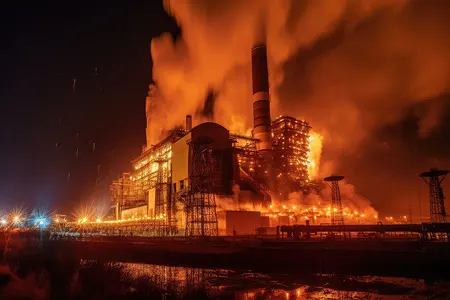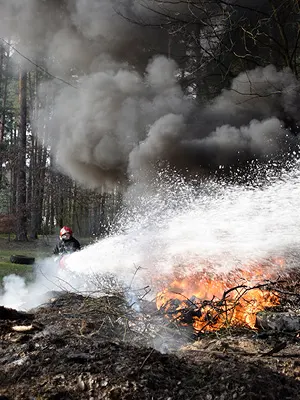Legal Action Against the Manufacturers of AFFF Foam: What You Need to Know
AFFF Foam Lawsuits – As of November 30th 2024, over 10,000 individuals have joined the AFFF Foam Lawsuit/MDL. Nine bellwether trails have been chosen and will commence in October 2025.
Until bellwether trials have concluded, it will be challenging to tell what, if any, damages juries may award to plaintiffs in the AFFF Foam Lawsuit/MDL cases. But now that bellwether trials have been chosen, we should see more movement in the case.
One thing we can say with confidence is that these cases are most likely nowhere near settling. Bellwether trials do not commence until October 2025, and there are nine bellwether trials to process through the system. We do not have a crystal ball of course, but to get through nine cases that won’t start until near the end of 2025, it seems unlikely this case will settle until near the end of 2026 or even in 2027. Of course anything can happen – the defendants could settle these cases tomorrow (though that seems unlikely).
An Overview of the AFFF Foam Lawsuits
There have been several lawsuits filed against companies that produce AFFF (Aqueous Film-Forming Foam), including 3M. Plaintiffs allege that products manufactured by 3M, DuPont, and others that used PFAS (per and poly-fluoroalkyl substances) chemicals have caused harm to human health and the environment.
For decades, firefighting foam (AFFF) has been used by both military and civilian firefighters to extinguish petroleum based fires. Unfortunately, the PFAS chemicals in AFFF foam pollute the environment and potentially cause cancer.

The lawsuits filed against the manufacturers of AFFF Foam claimed that the companies knew the dangers of PFAS but failed to disclose this information to firefighters, military personnel, and others who used or were exposed to AFFF foam.
Individuals who have been exposed to AFFF foam have reported various health issues, including cancer, thyroid disease, and other illnesses related to organ damage, hormone disruption, and immune system suppression.
One of the most significant lawsuits against AFFF foam manufacturers is underway in 2024 in the multi-district litigation (MDL) case in South Carolina. Thousands of firefighters and other service members have sued 3M, Tyco Fire Products, and other companies for damages related to their exposure to AFFF foam.
The lawsuit alleges these companies did not adequately warn users of the risks associated with these products even though they had known about the health hazards for decades.
The use of AFFF foam, manufactured by 3M, DuPont, and others, has been linked to cancer and other health consequences in recent years. According to a variety of studies, the chemicals in AFFF foam—known as PFAS—have been found to be carcinogenic and can lead to serious health effects such as organ damage, hormone disruption, and immune system suppression.
It remains to be seen what will happen next as more lawsuits are filed and evidence continues to mount confirming the potential health risks posed by PFAS chemicals. However, one thing is certain: accountability is necessary for companies like 3M and DuPont who have knowingly put people’s lives at risk without informing them of the dangers posed by their products.
The History of AFFF Foam in Firefighting and the Growing Danger of PFAS Chemicals
As news of the health risks associated with AFFF foam continues to emerge, it is important to consider its role in the history of firefighting and how we got to this point.
The development of AFFF was a significant innovation in firefighting technology, as it allowed firefighters to extinguish fires involving flammable liquids quickly and effectively. AFFF (Aqueous Film-Forming Foam) is a firefighting foam that was first introduced in the late 1960s and early 1970s as an effective way to combat fires involving flammable liquids like jet fuel, gasoline, and oil. Prior to the use of AFFF, firefighters primarily used water to combat these types of fires, but water was not effective at extinguishing petroleum-based fires.
By forming a thin film on the surface of burning oil, gas, or jet fuel, the foam “sealed in” flammable vapors which put out the fire and prevented re-ignition. Essentially, AFFF firefighting foam put down a chemical blanket that smothered the fire and prevented it from re-starting.
If you ever had the opportunity to see AFFF Firefighting foam at work (we have), you were probably amazed at how effective it was at putting out petroleum base fires. The problem is, once the fire was out and the threat over – the AFF foam was washed down the storm drains where it made its way into the water supply. It also got on the skin, clothes, and equipment of firefighters where it was absorbed and can cause cancer.
Since the late 1960s or early 1970s, the U.S. military has deployed Mil Spec AFFF at military bases, airfields, and Navy vessels and used AFFF foam to train crew members and firefighters to put out fuel-based fires. The use of AFFF foam allowed firefighters to extinguish fires that did not respond to water, like fuel oil or aviation fuel fires that are common aboard ships or at airfields where air operations occur.
Over the years, AFFF has become the standard for fighting fires involving flammable liquids and is widely used by fire departments and industrial fire brigades around the world. However, as the environmental impact of AFFF has become understood there are ongoing efforts to develop new firefighting technologies that are more environmentally friendly while still maintaining the effectiveness of AFFF.
AFFF and PFAS Chemicals
Since the 1950s, AFFF foam has been used to extinguish large liquid fuel fires and protect property from destruction. Manufactured by 3M and other companies, AFFF foam is an aqueous film forming foam made from fluorinated chemicals known as PFAS. These same chemicals have been linked to serious health risks such as cancer, thyroid disease, and weakened immune systems.
Since the 1960s, researchers have warned of the dangers of these PFAS compounds in relation to firefighting foams. Despite this warning, the use of PFAS-containing AFFF foam has continued for decades with firefighters exposed to its toxic chemicals on a regular basis. This exposure coupled with the chemical’s persistence in the water supply and soil has resulted in numerous lawsuits against 3M and other manufacturers over their role in producing AFFF foam with known health hazards.
As awareness of the health hazards associated with AFFF foam rises, firefighters and communities exposed to these toxins are now taking legal action. As of 2023, over 4,000 individual plaintiffs and nearly half the states have filed lawsuits against 3M and other companies for their role in producing PFAS-containing firefighting foam.
What is the problem with PFAS and “Forever Chemicals”?
The problem with “forever chemicals” like PFAS (per and poly-fluoroalkyl substances) is that they are carcinogenic, and do not break down easily in the environment or in the human body. Once these chemicals are released into the environment they can persist for decades or even centuries, leading to widespread contamination of water, soil, and air that can continue to cause cancer for generations to come.

PFAS chemicals have been used in a wide range of consumer and industrial products, including firefighting foams, non-stick cookware, stain-resistant fabrics, and waterproofing materials. As a result, these chemicals have become ubiquitous in the environment and have been detected in the blood of virtually all people tested in the United States. It is understood that every single person in the United States in 2023 has PFAS in their body and it will never break down.
One of the most significant challenges with PFAS chemicals is that they are difficult to remove from the environment once they have been released. PFAS are often referred to as “forever chemicals” because of their incredible resistance to both metabolic and environmental degradation. This means that contaminated groundwater, soil, and other environmental sources can continue to pose a threat to public health for decades or even centuries.
What is being done about PFAS?
In response to the growing awareness of these hazardous chemicals, governments around the world are taking action to mitigate their harmful impacts. The US Environmental Protection Agency (EPA) has set an advisory level for PFAS-contaminated drinking water while other countries such as Canada are developing national strategies to reduce PFAS pollution. Europe is currently working to ban ALL PFAS products forever. Additionally, many fire departments have started phasing out AFFF foam containing PFAS in favor of newer, more environmentally friendly alternatives.

As of June 2023, manufacturers of PFAS firefighting foam have set aside billions of dollars to settle lawsuits brought by state and local governments to pay for the damage PFAS chemicals have caused, the cost of health consequences that must be covered, and the long-term remediation cost of removing PFAS chemicals from drinking water and environment.
A new report from the Environmental Working Group estimates that it will likely cost over $30 billion for the U.S. Government to fully clean up the PFAS contamination around over 50 military bases after years of using AFFF firefighting foam during training exercises. If not addressed, the PFAS contamination at these military installations could pollute local water supply systems. So far, however, the Department of Defense has only allocated $1.4 billion to cover the cleanup costs.
Firefighters are getting cancer at much higher rates than the general public. A new study in the journal Occupational Medicine reports that firefighters are 60% more likely to die of cancer than the general population. The death rate for prostate cancer was four times higher, leukemia was three times higher, and kidney cancer was double the rate in the overall population.
The U.S. Centers for Disease Control and Prevention (CDC) has launched the National Firefighter Registry (NFR) for Cancer and wants all firefighters in the United States to enroll. The goal of the NFR is to track and analyze cancer rates among firefighters. The NFR will collect data on firefighters so they can compare it with cancer information from state cancer registries.
These are just some of the actions being taken to deal with the effects of PFAS chemical use. But the whole world is in the early stages of understanding and combatting PFAS and other “forever chemicals.” And remember – PFAS is still being used today as we write this, and ongoing use is not going to stop right away.
Did 3M, DuPont, and Others Know How Harmful PFAS Chemicals Are?
Central to litigation and the amount of damages the makers of AFFF foam will have to pay is whether they knew the dangers of PFAS, and what, if anything they did (or didn’t do) to protect users and the public.

Since the 1960s, DuPont and 3M knew PFAS chemicals build up in the blood of people and were aware of the health risks from exposure to PFAS compounds. They did nothing to warn the public.
These companies were the primary manufacturers of PFAS chemicals and used these chemicals in a wide range of consumer and industrial products, including firefighting foams, non-stick cookware, stain-resistant fabrics, and waterproofing materials.
Research conducted by these companies and others in the 1970s and 1980s found evidence that PFAS chemicals could be harmful to human health, including studies that showed liver damage, reproductive problems, and other health issues in laboratory animals exposed to these chemicals – and still they did nothing to warn the public.
3M, the initial AFFF manufacturer, didn’t publicly disclose the results of more than 1,000 internal PFAS studies it conducted or the results until decades after they had the information.
A toxicology professor at East Carolina who studied PFAS effects said, “Some of these companies had toxicity data they never published in the scientific literature until they had already made the decision to phase the chemicals out,” said DeWitt. “One of the first papers about their toxicity came out in 2004 – because 3M had made the decision to phase PFAS out of Scotchgard.” – They made this decision only after decades of the public spraying it in their homes to protect fabrics (which it did extremely well). It was a great product, except its main chemical was a cancer causing agent.
In 2001 attorney Robert Bilott filed a federal class-action suit against DuPont for polluting the drinking water for more than 70,000 people in and around Parkersburg West Virginia with PFOA (a relative of PFAS). PFOA was the chemical used to make Teflon (and may be the reason everyone in the United States has Teflon in their bodies). Robert Bilott’s years long battle (and subsequent win) with DuPont is now the subject of a film called Dark Waters.
If the way DuPont fought Attorney Robert Billot to avoid taking responsibility is any indication of the battles ahead over AFFF foam, you can expect 3M and DuPont to fight till the end to avoid settling. And if they do settle, you can bet they will never admit any wrongdoing despite the mountain of evidence against them.
In December, 3M announced that by the end of 2025, it will stop manufacturing PFAS chemicals and discontinue the use of them in its products. Why are they doing this? To help save the environment and people?
No – they said it was because of the “rapidly evolving external regulatory and business landscape.” They didn’t stop making it because it was killing people or harming the planet for centuries to come – but because it was becoming regulated and therefore harder to make money.
What is the Status of the Ongoing Litigation?
The multidistrict litigation (MDL) in South Carolina related to AFFF foam exposure is ongoing as of November 30th 2024.
As of November 2024, the AFFF foam lawsuits are progressing with nearly 10,000 cases pending in the multidistrict litigation (MDL). The lawsuits involve claims that exposure to AFFF firefighting foam, which contains PFAS chemicals, has led to various health issues, including cancer.
The litigation is progressing toward bellwether trials, with the first set slated for October 2025. Meanwhile, settlement discussions are actively underway, raising the possibility that many cases could be resolved before reaching the courtroom.
The initial bellwether trials center on personal injury claims, with a particular emphasis on cases of cancer linked to PFAS exposure.
Major Update AFFF Foam Lawsuit/MDL 2024 – Plaintiffs Must Prove Exposure to AFFF Foam
In a 2024 development in the AFFF Foam Lawsuit, the judge presiding over the case has mandated that plaintiffs must specify at least one location where they were exposed to AFFF Foam in order to remain part of the MDL.
Essentially, the judge is insisting that to be a plaintiff in the case, plaintiffs must prove they were exposed to AFFF Foam at least one time. Military personnel may need to search through their military records to prove they attended firefighting schools or were exposed to AFFF Foam where it was in use on a military installation or vessel.
Non-military will need to provide evidence that they were exposed to AFFF Foam which may have occurred at or near a manufacturing plant, from an environmental exposure (harder to prove), or from medical records or by some other means.
This will not necessarily be easy for former military members who did not keep copies of their service record. Requesting military records could be a potentially slow and daunting task. But there will be no way around it – the judge has decided you must provide proof of at least one exposure.
July 2024 – Bellwether Trials for AFFF Foam Lawsuits
As of July 2024, nine bellwether trials have been selected for the AFFF Foam MDL.
The judge overseeing the AFFF Foam MDL has selected nine cases to be prioritized for trial. These cases involve Pennsylvania residents diagnosed with kidney or testicular cancer, as well as Colorado residents suffering from thyroid cancer or ulcerative colitis. All conditions are allegedly linked to exposure to aqueous film-forming foam.
Now comes the lawsuits brought by individuals which involve thousands of lawsuits filed by firefighters, military service members, and others who were exposed to AFFF foam containing PFAS chemicals. The plaintiffs allege that they suffer from health problems because of this exposure, including cancer, thyroid disease, and other illnesses.
How Much Has Been Paid So Far in AFFF Foam Settlements as of 2025?
- $4 Billion settlement with PFAS-containing product manufacturers DuPont, Chemours, and Corteva
- $850 Million 3M PFAS settlement for polluting Minnesota groundwater with PFAS
- $50 Million settlement between DuPont, Chemour, and Corteva and the State of Delaware regarding PFAS water pollution
- $17.5 Million AFFF class action lawsuit settlement with Johnson Controls, the maker of Tyco Fire Products, which includes PFAS-containing firefighting foam
It is important to note, however, that most of these settlements are with states and water districts. Lawsuits bring brought to the MDL by individuals are still in the Bellwether Trial stage. Based on the result of the bellwether trials, plaintiff attorneys and defense attorneys will begin making strategic decisions about potential settlement amounts to expect (if any).
Who is Eligible for AFFF Foam Lawsuits?
As of November 2024, the number of people entering the MDL filing lawsuits related to AFFF firefighting foam has ballooned to over 10,000.
Firefighters, military personnel, and other service members who were exposed to AFFF foam containing PFAS chemicals may have grounds to bring a lawsuit against the manufacturers of this product. These individuals may have been exposed to AFFF foam in training exercises, during emergency responses, or while maintaining equipment that used AFFF foam.
In addition, individuals who live near military bases or airports where AFFF foam was used may also have been exposed to these chemicals through contaminated groundwater or other environmental sources and may be able to bring a lawsuit for damages related to their exposure.
The harmful effects of PFAS chemicals in AFFF foam exposure can include cancer, thyroid disease, liver damage, and immune system suppression. Therefore, anyone who has suffered from these or other health problems related to AFFF foam exposure may be eligible to bring a lawsuit against the manufacturers of this product to seek compensation for medical expenses, lost wages, and other damages.
It’s important to note that the specific eligibility criteria for bringing a lawsuit can vary depending on the laws and regulations in your state or country, as well as the individual circumstances of your case. If you believe you have been harmed by exposure to AFFF foam, it’s advisable to consult with an experienced attorney who can advise you on your legal rights and options.
Lawyers Representing AFFF Foam Lawsuits
There are many large law firms representing plaintiffs in AFFF foam lawsuits. Among them are huge law firms like Morgan and Morgan from Florida. There are also smaller law firms that specialize in bringing product liability cases to court and representing individual clients.
Plaintiffs may be wondering if they need a law firm that specializes in AFFF foam (or similar) cases. Generally speaking, any time a person or group of people practice doing something, they get better at it. By working with attorneys who already have experience bringing these types of cases to court, plaintiffs may receive better settlements and better long term treatment (should it become necessary).
Something else to consider is the financial strength of the law firm bringing the case to court. The attorneys working on AFFF Foam cases are almost entirely plaintiff attorneys. Plaintiff attorneys work on a contingency fee basis and only get paid if they win the case. This means they don’t get paid unless they win. It also means they don’t get paid until AFTER they win.
These cases can drag on for five to ten years. And once the case is over, it can take years longer to get the money. This is why it is important to make sure the law firm you choose has the financial strength to last through and endure this kind of ongoing battle.
This doesn’t mean that a small law firm can’t do the job for you. Special types of litigation financing are available for law firms of all sizes to help them take on these big cases, win, and even get some of their contingency fees advanced to them while they wait for a defendant to pay what they owe.
Why do Courts Consolidate Lawsuits into an MDL (Multi-District Litigation)?
You can think of an MDL as a central processing hub for lawsuits. Any time a large number of individuals bring lawsuits over the same product, class of product, or against one company, it can create an impossible burden for the defendant and their lawyers. It can equally burden the court system.

Instead of having 4,000 similar lawsuits spreading out across fifty states where a similar case must be litigated repeatedly, (and be proven repeatedly) an MDL can be formed to adjudicate all of the lawsuits stemming from a product like AFFF foam. This creates expediency for the court, the plaintiffs, and the defendant.
An MDL also allows a single judge to become familiar with the case, the defendant, and the evidence. Imagine if 4,000 judges had to preside over the same case in fifty different states, towns, and municipalities – each judge would have to learn the whole thing each time. This wouldn’t be an efficient logical way to process a lawsuit – plus it could (and probably would) result in 10,000 appeals being filed later by defendants.
But just because a case is consolidated into an MDL does not mean it will stay in MDL status. If parties are not cooperating to reach a conclusion to the lawsuit in a manner the judge finds agreeable, MDL status can be lost. The judge can remove a case from MDL status and send it back to the states.
If this happens, it forces a defendant to litigate each lawsuit one case at a time, in every state there is a lawsuit filed. This could take decades to complete, be extremely expensive, and could also produce wildly different payouts depending on juries and judges. This would be a high risk for the defendant, but it can happen if they drag their feet too long.
Summary AFFF Foam Lawsuits – Health Effects, AFFF Foam Cancer, and PFAS Foam Cancer?
AFFF Foam contains chemicals known as PFAS which have been linked to a variety of adverse health effects when exposed to it. These include cancers such as kidney, testicular, and thyroid cancer. There are numerous lawsuits currently pending against the manufacturers of these products due to the health consequences of exposure to AFFF Foam.
Those exposed to AFFF Foam and PFAS chemicals may be eligible to bring a lawsuit against the manufacturers of this product for damages related to medical expenses, lost wages, and other damages. There are various law firms representing plaintiffs in these lawsuits, including both large and small firms specializing in product liability cases.

These cases are often consolidated into Multi-District Litigations (MDLs) which is beneficial for both plaintiffs and defendants as it allows for expediency and one judge to become familiar with the case, defendant, and evidence.
Ultimately, the health effects of AFFF foam and PFAS chemicals are still being researched and it is advisable to speak with an experienced attorney if you believe you have been exposed.
As of November 30th 2024, nine bellwether trials have been chosen – the first one of which is scheduled to commence in October of 2025.
It appears that the AFFF Foam Lawsuits are a long way from reaching a settlement, and with the bellwether trials still so far away, it is impossible to predict with any certainty what, if any, damages a jury may award plaintiffs in the case.
But one thing you can be certain of is that since the cases brought by states and municipalities over the environmental impacts AFFF Foam created have mostly concluded, plaintiff attorneys will be able to take advantage of the discovery found in those cases to help achieve justice for their clients.
How Attorneys Can Take Out a Post Settlement Advance Once a Case Settles
How Does Post Settlement Funding Work?
Once a law firm has reached a settlement or judgment, the money they are owed is an asset. Because it is an asset, they can sell all or part of it.
The legal funding company purchases a portion of the amount owed to you (at a discount). The law firm receives some of its money now, and the legal funding company owns the asset (a portion of the settlement funds sold to them). The law firm receives some of its money right away, and the legal funding company waits for the settlement funds to be paid out directly by the lead counsel, or whoever is designated to distribute the funds on behalf of the settlement.
Infographic – How Post Settlement Funding Works

Let Us Explain How Post Settlement Funding Works
• Attorney has settlement in a case but will experience some delay before their contingency fee is distributed to them
• Attorney applies for a post-settlement advance with Balanced Bridge Funding.
• Balanced Bridge examines the case. A determination is made on how much of the fee Balanced Bridge will purchase and how much will be advanced to the attorney
• Balanced Bridge discusses the funding terms with the attorney and provides them with the agreement to review and sign.
• Once that is all completed, Balanced Bridge wires the advance directly to a bank account specified by the attorney.
This process is often completed in a day or two but can take longer.
Once the fee is distributed, Balanced Bridge is sent its portion of the fee.
Is Post Settlement Funding for Lawyers a Loan?
Post Settlement Funding is NOT a Loan. Although Post Settlement Funding is often referred to as a loan for lawyers or settlement advances for lawyers, it is not a loan. If you look at the infographic above or the explanation below it, you will see that the litigation finance company isn’t loaning you money against your settlement award. Instead, they are purchasing it from you and then they get their money from the attorney of record handling the distribution of funds from the case.
About Legal Funding with Balanced Bridge Funding:
A Post Settlement Advance is a Non-Recourse Transaction: We Accept All the Risk
Post Settlement funding is a non-recourse transaction. This means you don’t need to worry about what might happen if the defendant suddenly can’t pay your settlement award — we accept all risk of non-payment, meaning that you will still get to keep the money from your settlement advance if the defendant goes bankrupt or is unable to pay for whatever reason.
Fast, Hassle Free Application
In most cases, we can get your money in your hands in one week or less. Our application is simple, straightforward, and easy to complete. Remember, this isn’t a loan, so there isn’t as much paperwork to go through. In most cases, we can approve your application and have your money deposited into your checking account in a matter of days.
About the Authors
Balanced Bridge Funding offers legal funding solutions for plaintiffs, plaintiff attorneys, attorneys, and law firms. To talk to one of our legal funding specialists about getting help managing your law firm cash flow, please call (267) 457-4540 or email info@balancedbridge.com.
Or to apply online, simply CLICK HERE and fill out our quick application.


